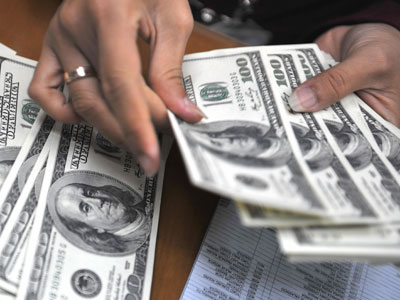By Mahmoud Salah El-Din
Bankers, members of the group Central Accounting Apparatus Observers Against Corruption (CAAOAC), and President Mohamed Morsy will hold a meeting within days in order to discuss corruption in the banking sector.
Bankers and members of the CAAOAC will deliver a memorandum to the President that contains a Central Accounting Apparatus’ (CAA) report on the performance of the banking sector for the fiscal year that ended in June 2010.
The report contains information as to the performance of the Egyptian Central Bank of Egypt (CBE), the National Bank of Egypt (NBE), Banque Misr, and the Egyptian Arab Land Bank (EALB).
According to the report, the CBE held capital equal to EGP 4 billion at the end of June 2010 with a budget of EGP 402.6 billion.
CBE profits were EGP 535.1 million. The bank held EGP 145.9 billion in reserves at the end of 2010, with gold accounting for 8.5%, Egyptian government bonds accounting for 83.9%, and foreign currency making up 7.6%.
Reserves equalled EGP 127.6 billion at the end of the financial year endeding in June 2009.
The report criticised the CBE as well as the NBE for going over budget on a monthly basis.
The NBE makes payments and collects revenues on behalf of the government.
The CAA report indicated that the government covered the deficit in the 2009-2010 fiscal year by relying on open account debt.
The government overspent by 10% of average revenues in the state’s budget during the last three years, a total of EGP 23.3bn.
Overspending is a violation of article 27 of the 2003 Banking Law no. 88 and resulted to EGP 12 billion in January2010.
The report also indicated that Syria owes EGP 25million and that there are still suspended financial claims between the CBE and the Central Bank of Syria.
The CAA urged that Egyptian government increase its efforts to arrive at settlements for the debt.
Government expenditures from the 2009-2010 fiscal year, which equalled EGP 96.5million, were excluded from the report.
The amount represents the price difference of interbank spending, the result of foreign currency selling by the Arab African International Bank and the Suez Canal Bank between July 1, 2009 and September 30, 2010.
The currency was sold below the rate listed by the CBE during the same transaction period.
The CAA criticised the CBE’s Board of Directors for not approving the 2010-2011 budget until September 2010, a violation of article 20 the CBE law.
The article stipulates that the budget must be approved at least three months before the beginning of the new financial year.
The CAA also accused the CBE of violating article 25 of Banking Law no. 88 of 2003.
The article states that the CBE receives compensation for the banking services it provides to the government according to listed prices.
According to the report, the CBE did not receive compensation for services provided in regards to National Investment Bank (NIB), national development bonds delineated in U.S. dollars offered according to Law No. 6 of 1986 as well as Ministry of Housing bonds offered according to Law No. 41 of 1977.
The report indicated that a member of the CBE’s Board of Director’s received EGP 407,500 thousand during the 2009 to 2010 period.
The funds were obtained in the form of an EGP 250,000 exceptional loan and an EGP 157,500 advance.
The loans were a violation of Article 61 of Law No. 88 which prohibits public credit for members of the CBE’s Board of Directors.
The CAA has not yet been provided with documentation concerning internal oversight and investigations for the 2009-2010 period, particularly in regards to the Egyptian mint.
CAA officials said they did not know the results of an internal CBE investigation from May 2010, nor were the aware of steps taken by the CBE to ensure complete compliance with all regulations.
An inspection of the NBE’s credit facilities revealed that only 20 clients held 42.8% of the bank’s credit portfolio, or EGP 44.2million.
The report also accused the NBE of violating CBE decisions regarding article 71 of Law No. 88 which prohibits the bank from offering credit equal to more than 20% of the bank’s capital base to a sole customer.
The CAA found that the bank’s loans to five clients exceeded the mentioned amount.
The report indicated that one client’s credit at the end of 2010 reached EGP 1.323billion in loans to finance a gas line from Arish to Askalon in Israel.




